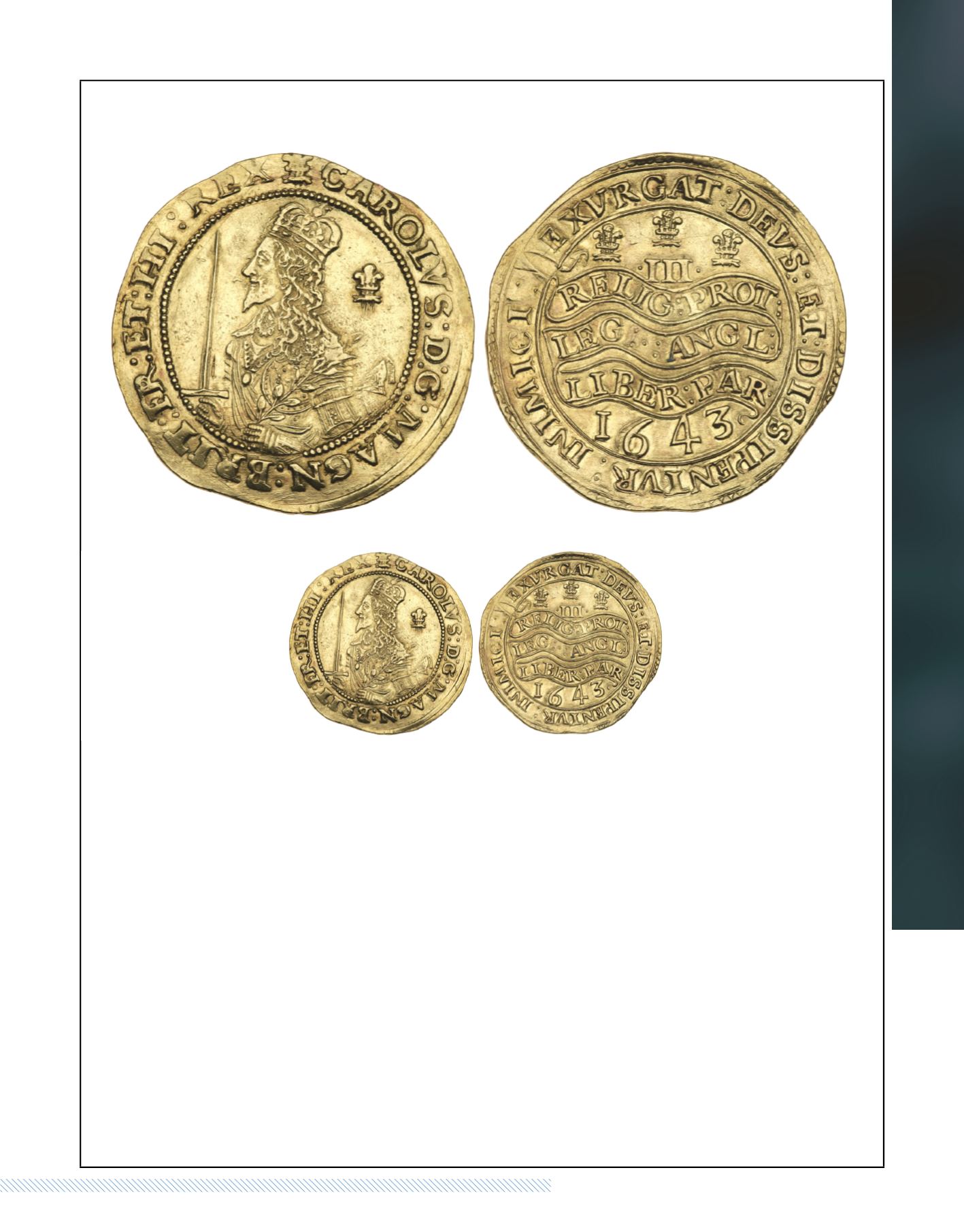

143
bid online at
www.goldbergcoins.com(800) 978-COIN (2646)
|
SPECTACULAR, RARE VARIETY CHARLES I TRIPLE UNITE 1643.
(SCARF FLIES FROM KING' S SHOULDER)
2283
Great Britain. Triple Unite, 1643 (Oxford)
. S.2726; Fr-258. Charles I, 1625-1649. Half-length crowned artistic bust of King left, in
armour, with scarf flying from shoulder, holding a sword in one hand and an olive branch in the other, plume behind portrait. Mint mark Oxford
plume above. Obverse legend reads: CAROLVS: D:G: MAGN: BRIT: FR: ET: HI: REX. Reverse has declaration in three lines on scroll RELIG:
PROT LEG: ANGL: LIBER: PAR, with value (III) and 3 plumes above, date below. The Latin translation underlines the King' s promise to pre-
serve the Protestant religion, the laws of the land and the privileges and freedom of Parliament. The coin has an evenly struck portrait and
superb reverse detail. Both obverse and reverse surfaces glisten with original luster. Struck on a full flan, and in virtually mint state for this
issue.
The Charles I Triple Unite is probably England' s most impressive denomination, and one of the nation' s most important and historically sig-
nificant numismatic rarities. It is estimated that there are only around 225 Triple Unites in existence, and this relatively small figure includes
several different types and varieties. This piece is remarkable because it is a rarer type than is normally encountered, but has none of the
double-striking associated with the variety. This coin does however have the same small irregular raised marks (die ' pimples') in the obverse
field in front of the King' s face as the J.Pitman/Samuel King, Schneider and Millennia Collection specimens, which demonstrates that very few
coins of this type were made.
NGC graded AU-50
.
*Charles made his headquarters in the city of Oxford late in 1642 at the height of the English Civil War and produced his coinage there. After
the king' s final break with Parliament, the parliamentary authorities, still using the king' s name and effigy, continued to manufacture coins in
London. This only ended after the king' s execution in early 1649.
Lamenting the fate of Charles I one scholar expressed surprise that ' so good a man should be so bad a king.' Despite the magnificence of
much of Charles' s coinage the king was not over-endowed with money. For a long time the welfare of England and the raising of money by
taxation had depended on some sort of balance being maintained between monarch and Parliament, something that neither James I nor his
son Charles ever began to understand.
Charles lectured the first assembly that lack of funds forced him to call in 1625, ' Remember that Parliaments are altogether in my own power
for their calling, sitting and dissolution.' He was technically right, but his lack of tact and his arrogance sadly set the tone for the rest of his
reign. This led to the ultimate confrontation with Parliament and eventually cost him his throne and his life.
Estimated Value ..........................................................................................................................................................$90,000 - 100,000
Enlargement



















